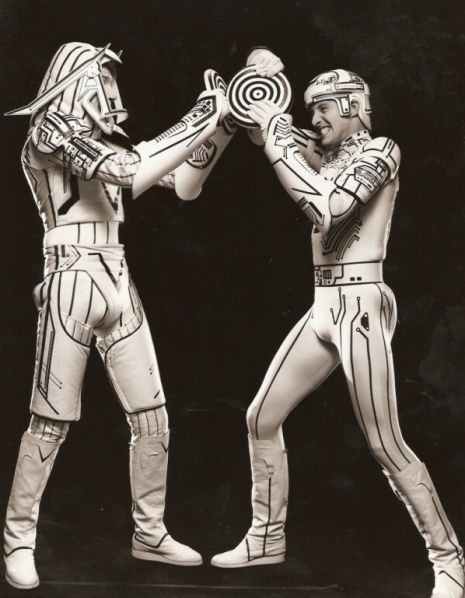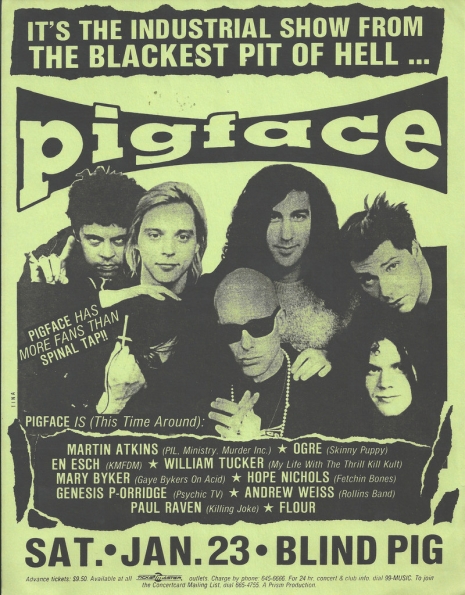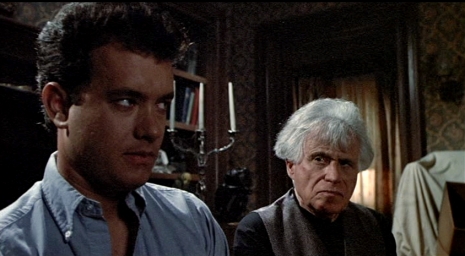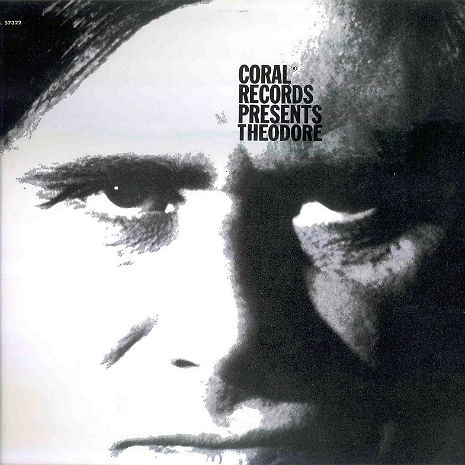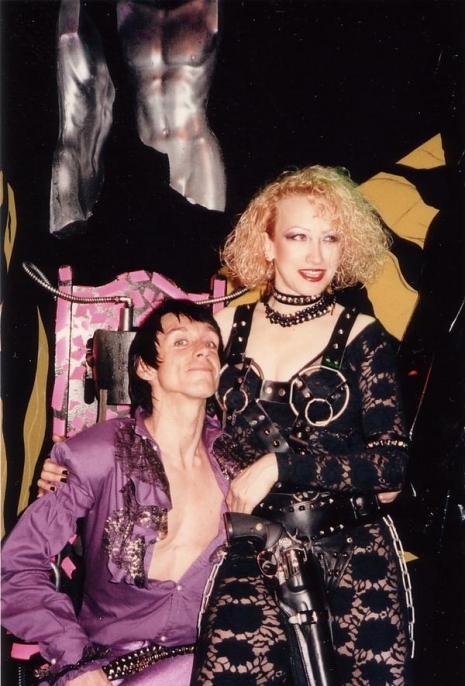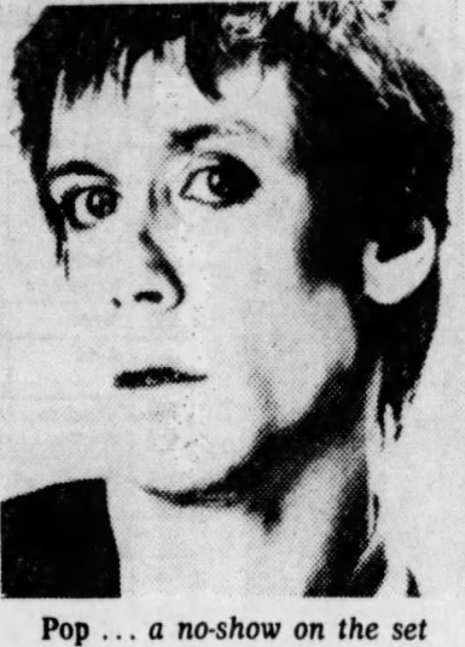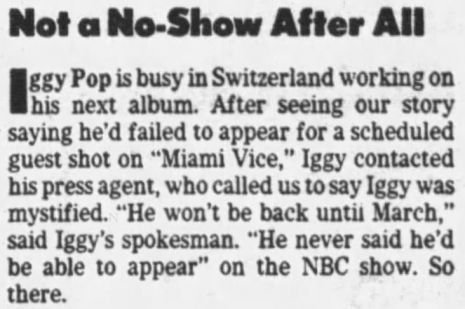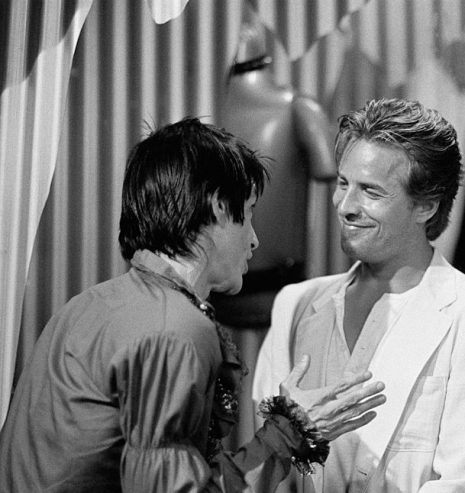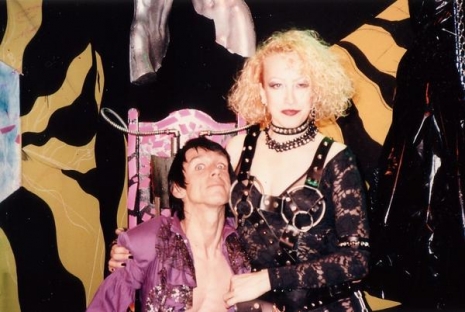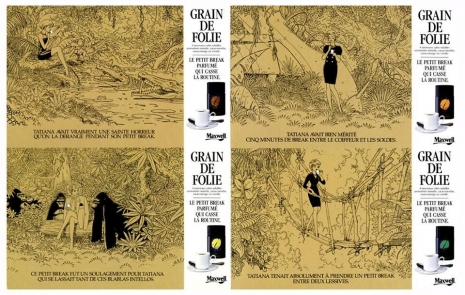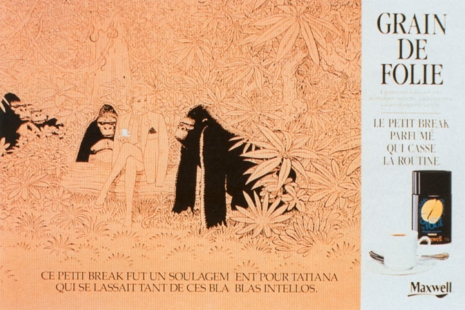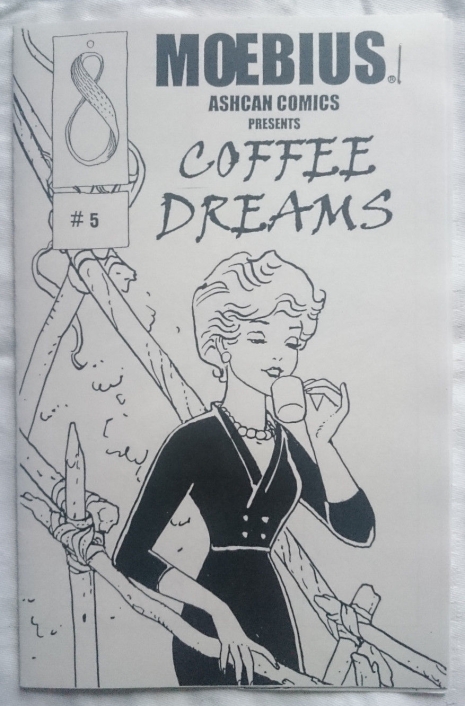_465_769_int.jpg)
Illustration from the cover of the ‘Jerusalem’ 12-inch and the ‘Mark Stewart + Maffia’ compilation
Head above the heavens, feet below the hells, the singer Mark Stewart has embodied the international rebel spirit since he fronted the Pop Group as a teenager, giving voice to activist and imaginal concerns shared by punks, Rastas and b-boys. Mark Stewart and the Maffia’s moving, mind-mangling, amazing debut album, 1983’s Learning to Cope with Cowardice, whose sounds still beckon from an unrealized future, will be reissued on CD, vinyl and digital formats tomorrow, supplemented by an extra disc of recently discovered outtakes that differ radically from anything on the finished album. Sales of the double LP edition benefit Mercy Ships, an organization that provides lifesaving surgeries to people in poor and war-torn countries around the world.
I spoke with Mark Stewart last week by transatlantic telephone line. After he expressed his respect for Dangerous Minds, affably breaking my balls about the post in which I outed him as the owner of the face in Discharge’s logo, we talked underground media and mutual aid briefly before settling in for a discussion of his solo debut and the current historical moment. A lightly edited transcript follows.
Mark Stewart: I’m so pleased to be working with Mute again, and Daniel Miller has kind of rejuvenated Mute, and the independents—it’s a pleasure, you know, to work with cool people where something flows, you know? It’s really important for us that there’s those kind of columns in the underground.
Dangerous Minds: Holding it up.
Holding it up.
I wouldn’t have asked you about this, but I interviewed Adrian Sherwood the day after the Brexit vote, so it strikes me as funny that I’m talking to you now, right after the deal failed. Do you have anything to say about the situation?
I think it’s a total distraction. [laughs] I think it’s a complete smokescreen, and I’m very scared what’s going on behind the scenes. It’s like, I was watching something about Goebbels’ control of the media on some history channel, right, and how he learned from Madison Avenue. I’m not taking a position right or left on it, but I think it’s the most bizarre distraction in the last few years, and God knows what’s going on. But, you know, behind the scenes, our health [services]—there’s all sorts of things, all these laws are being passed behind the scenes, but that is the only thing journalists are looking at. Not the only thing, but do you understand what I’m saying? That isn’t a comment against whoever and whatever.
The problem is, in England, and I’m not being rude, is it is so class-ridden, it’s a problem for both sides of the spectrum. I was living in Berlin for a while, and I was talking to a very cool Japanese guy yesterday, who’s translating this friend of mine, Mark Fisher’s, this theorist’s book on capitalist realism. And in Germany, and I think until fairly recently in Japan, skilled laborers were treated with ultimate respect. The unions worked with the entrepreneurs, or the bosses, or whatever, and there was a kind of “synergy,” to use a wanky name, and so the economy was quite strong, and there was a social service system. . . you know, Germany’s quite an interesting model. But here—the craziest thing is, people are speculating, people are making big money out of these sudden changes, they’re spread-betting against these sudden changes of polarity, you know? I was reading, ‘cause I always read all sides of the spectrum, I was reading in a financial thing, suddenly sterling has got very, very strong. You know? And these politicians are being played. Do you know what I mean? They’re being played.
I can sit and talk to a Tory boy, I can sit and talk to whoever. And I’ll listen to people and try and talk to them in their language, and try and understand their point of view, right? ‘Cause being opposed to people, you don’t really get anywhere. But they think they’re doing something for whatever bizarre, medieval idea of nationalism or identity politics or whatever you call it, and there are some—there used to be this thing in England which was called “caring conservatism,” which was quite feudal, it was like how the king of the manor would give the employees some bread. [laughs] Scraps from the table or whatever. But here, the problem is, the working class are envious of the rich, and the rich want to squeeze the working class until it explodes to get every drop of blood out of them. It’s quite a strange system. And the middle ground that you’ve got in Germany, with the, whatever they’re called, Christian Democrats or something; back in the day, when people like Chomsky and everybody used to attack these middle-left kind of parties—you know, I read a lot of theory, but now, that is heaven compared to what’s happening these days! “The center cannot hold.” Everything is just. . . it’s bizarre, you know?

Adrian Sherwood and Mark Stewart, London, 1985 (photo by Beezer, courtesy of Mute)
But the problem is, again, my personal Facebook is full of loads of cool people who I really respect, so I get utterly impressed when, like, these Italian theorists start talking to me about how this album or our early work inspired people to get into different ideas about the planet. But I’m sick to death of people moaning about these non-events, which could be like—it’s like an orchestrated ballet of distraction. You know, it’s bollocks! “Never mind the bollocks” is never mind the fuckin’—it’s bollocks! And people are constantly talking about it.
And what I would be doing—so many of my American friends are just constantly posting this stuff about Trump, right? And I’m like—sorry, I’ll probably lose a lot of respect for saying this, I’m sorry, but as soon as the polls were looking like that, the guy’s been democratically elected, we’d roll up our sleeves and try and organize for 10 years down the line, if not five years down the line, and try and grow some sense of hope! Spread seeds of hope, culturally, in these small towns. That’s what things like punk are about. You know, with punk, a youth center opened, or a squat opened, and little places changed a bit, you know? Now people are just tutting. Saying “Oh, he’s bad”—so what? You’re bad for not fuckin’ doing anything! Sorry to rant, but there’s this culture, this narcissistic culture of wallowing in defeat. Which is basically another way of saying “I’m not going to do anything, but I’m gonna pretend to have a conscience by tutting.”
Yeah, people are glued to their TV sets and the news constantly, and it makes them feel powerless, and they don’t do anything. I don’t know if it’s a similar thing with Brexit.
I don’t know. I think people make a choice not to care from an early age. I’m not being rude. You can blame this, you can blame something outside of yourself, but as I grow a little bit older and I get more pulled into weird, sort of Taoist sort of things, it’s to do with putting a foot forward and breaking outside of the mold, and if you get hit, you get hit. Or if somebody says you’re a nutter, like they said about us back in the day, you know, or they say you’re wrong, or whatever, at least you stepped forward, outside of the embryonic—do you understand what I’m saying? You have to do provocations. In my sense, it’s kind of art provocations. What I do is, even if I’m not sure about something, I think It’s enough of a curveball to go in that direction, or to spin against my own stupid sense of conditioning: sparks will fly. Let’s go! Let’s do it. Do you know what I mean?
It’s this sitting back—and now you’re getting people kind of reminiscing about the Cold War! Which again was a distraction. It’s just nonsense, you know? People want to live in this nostalgic bubble. And now they’re saying that the fuckin’—a journalist in an English paper was saying that the Cowardice times were more paranoid than now? What the fuck? [laughter] With Cambridge Analytica, we got fuckin’ algorithms—if there was a Night of the Long Knives overnight and somebody got control of the algorithms, thousands of people could just be rounded up for reading Dangerous Minds. Do you understand what I’m saying? And it’s all sold to the highest bidder; there isn’t even any politics involved. It’s naked capitalistic control. But, you know, now I’m moaning like I shouldn’t have done. Daniel Miller had this idea of enabling technologies, and in America, there was always like Mondo 2000 and Electronic Frontier Foundation. So I’m positive as well as being. . . it’s very interesting times. And when there’s change, there’s possibility.
One of the main reasons I wanted to interview you about this record is that “Jerusalem” is one of my favorite recordings.
This one, or another one? My one, or somebody else’s?
No, your “Jerusalem” is one of my favorite records. Part of it is, there’s the Blake poem, which has all this revolutionary, visionary significance, but then there’s so much layered on top of it—all this patriotic meaning, and it’s in the hymnal, and I don’t know if you know that story about Throbbing Gristle playing at the boys’ school and the boys singing them offstage with “And did those feet in ancient time”—
No.
—so I wonder if you could tell me about what that song means to you, and whether you were trying to recover some of the William Blake in that song.
Well, it’s a long, long, long story, and a lot of it’s got to do with an ancient tradition of kind of English, kind of Celtic mysticism, which is—I’m gonna sound like David Tibet now or something—but I’m a Stewart, right? And our family history is linked to this other family called the Sinclairs. My father died a couple of weeks ago, and he was a real, to use the word nicely, occultist. He was a Templar, and he taught remote viewing. But for me, I feel, growing up near Glastonbury—this might sound very, very hippie, this, but it’s the kind of mysticism of Blake that I really liked, right? There was a review in the Wire, when the record first came out, back in the day, and they said me and Adrian, it was a perfect alchemical marriage, or something. If you can be kinda hopefully mystical at the same time as being hopefully an activist, there’s an uplifting sense of that tune in specific.
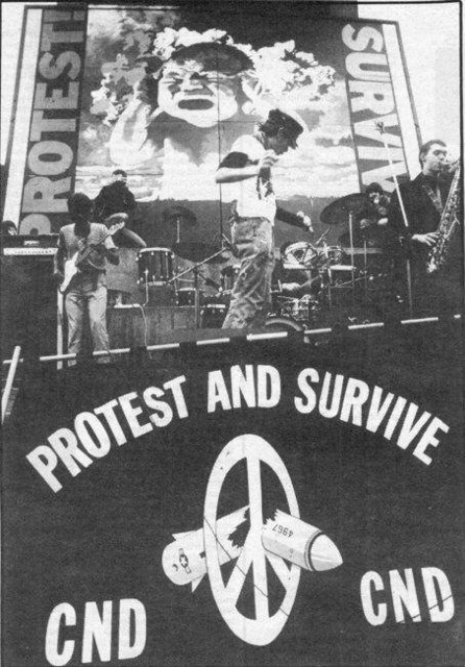
Mark Stewart and the Maffia’s first performance, CND rally in Trafalgar Square, 1980 (courtesy of Freaks R Us)
What happened was that the last ever Pop Group concert and the first ever Maffia concert were on the same day. Basically, I’d got sick to death of music, I’d kinda packed it all in, I thought we weren’t ever gonna get anywhere with it, and I was just bored of it, right? And I became a volunteer in the office of the Campaign for Nuclear Disarmament in London, in Poland Street, right? And one day in the office, Monsignor Bruce Kent, who was in charge of the Campaign for Nuclear Disarmament at the time, we were organizing what turned out to be the biggest postwar demonstration against nuclear weapons, and the center of London was brought to a standstill by 500,000 people. People came from far and wide, from Scotland, from everywhere. And he turned round and said, “It might be good to have some music,” ‘cause, you know, Tony Benn and all these amazing people were speaking, and I said, “Oh, I’ve got a band!” And I said, “I can ask some of my mates.” So I asked the Specials and Killing Joke; Specials couldn’t do it, but Killing Joke did it, and we ended up playing between the lions in Trafalgar Square. My brother and loads of my weird artist mates did this huge kind of amazing mural of this baby coming out of this atom bomb.
Basically, I was thinking to myself, What would be a classic rallying song, that people young and old—you know, ‘cause very few people would have known about the Pop Group in this demonstration—young and old, like Woody Guthrie, or Pete Seeger, or something like “We Shall Overcome,” what would be good for England? And immediately I thought of “Jerusalem.” And the Pop Group was going all sort of free-jazzy and out there and stuff, where I couldn’t get it together with the Pop Group. I was already hanging out with Adrian and starting to make some sort of reggaeish stuff, so the first version of the Maffia got up and played “Jerusalem” and a few other songs a few hours later in the day, ‘cause people sing it on marches and stuff in England.
So that was the reason for the “Jerusalem” thing. And that moment, that moment in the middle of London, you know, it was the proudest day of my life, to actually be involved in—I’m just trying to organize something just now, just before you phoned, to try and kick off a big sort of demo this year, because that’s what gets me going! It’s like when we used to do Rock Against Racism; we did stuff for Scrap SUS, when they used to just stop black kids on sight and search them, the police; Anti-Fascist League, you know, and now we’re doing this stuff for these Mercy Ships people, who build these boats—they do up these old kind of trawlers and park them out in international waters, outside war zones, and make them into little floating hospitals and operate on kids and stuff. That’s what the money from the limited vinyl’s going towards. But it’s just like—when it’s a benefit, you can get other cool bands. There’s a band here called Fat White Family and all these offshoots of them, Black MIDI or something, there’s these conscious young bands who are mates of mates, and I know in a couple of phone calls I can get an amazing bill together, and the people around me aren’t gonna ask for so much money, they’re more likely to answer the call, you know? And people remember those events for years to come.
Well, I remember you said something in an interview years ago, “The political and the mystical go hand in hand.”
[laughs] I always say the same bollocks! You’ve caught me out!
Much, much more after the jump…
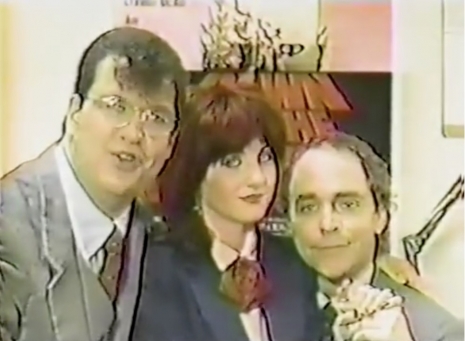








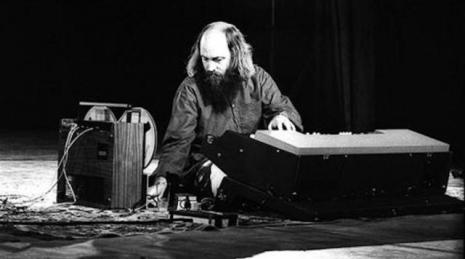

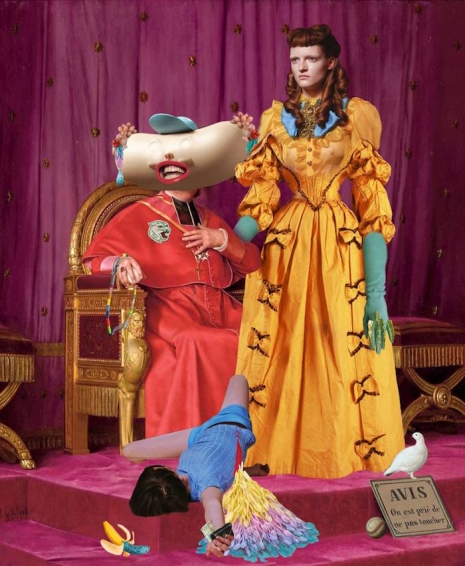
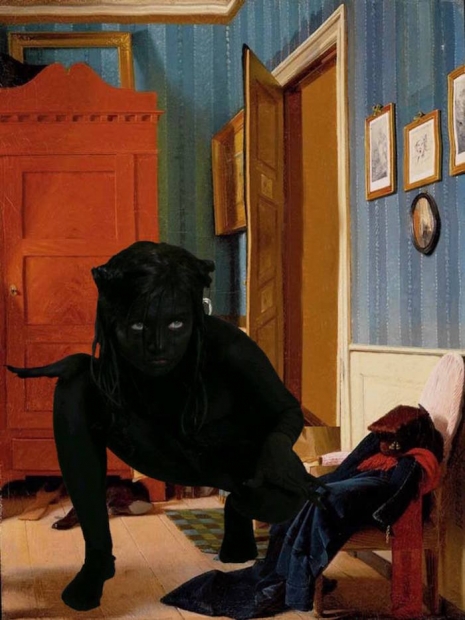
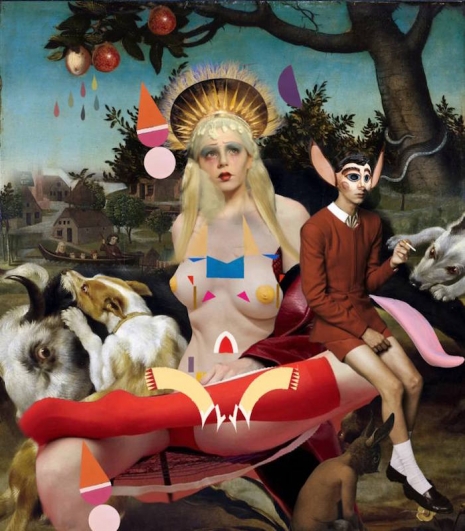

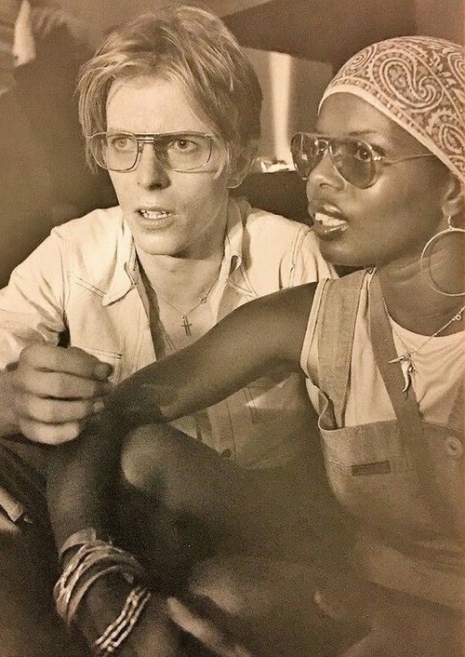
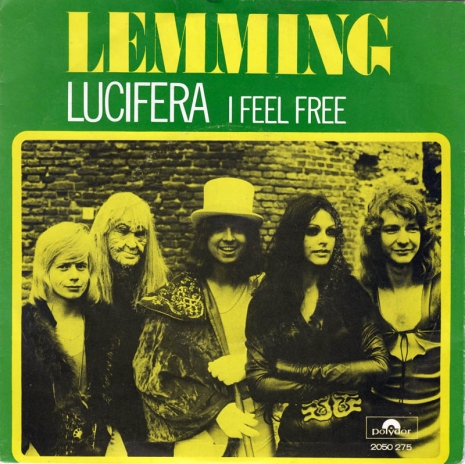


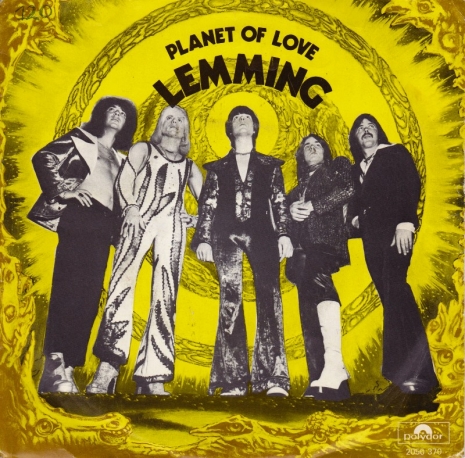
_465_769_int.jpg)








